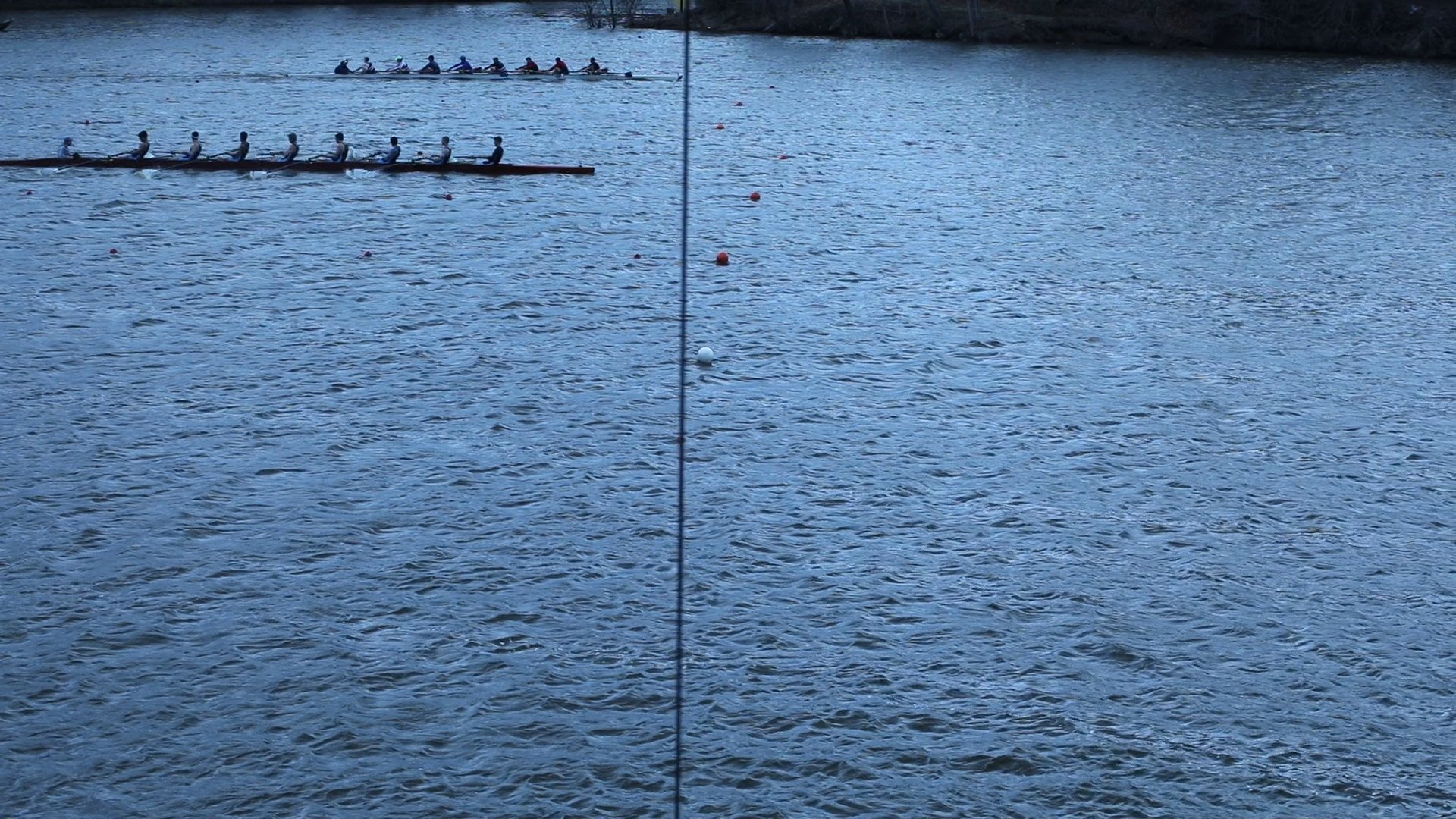|
Regatta Reality: A 360-degree study
By Abby Mergenmeier Regattas are typically depicted in the media as a spectator sport: constant cheering, the athletes physicality on clear display, and hoards of people engaged in what theyre watching before them. In reality, regattas are still exciting events but still photos and print stories augment and condense the entire days experience for the media consumer. Photojournalists often bring large lenses with far-reaching capability in order to capture detailed photos of rowers with their cameras. The photos captured using large lenses are strong and capture the emotions of the rowers and physicality of the sport, but they only capture the action on the water, such as the photo below, taken at a recent Henley Royal Regatta on the River Thames in England (arguably the most famous regatta in the world).
These kinds of photos are insightful, but they dont portray the overall experience of the regatta. Attending a regatta is so much more than what happens on the water. Also, these up-close photos give an obscured perspective of what a typical spectator would see while watching a race. The photo below -- taken with an iPhone 6S, zoomed in as close as possible -- taken at an April 1st high school regatta in Fairfax Station, Virginia at Sandy Run Regional Park on the Occoquan River gives a slightly more truthful depiction of what a spectator would see at a regatta:
While the latter photo gives a more true-to-reality image of what a spectator would see with his/her own eyes at a regatta, its certainly not an attractive photo. Similarly, a simple video would give a one-sided view of the action on the water, and perhaps at a much more zoomed-in perspective. In reality, spectators only get a good look at the rowers for only a few seconds. High school races in the United States are usually 0.93 to 1.24 miles in length; a length farther than the typical eye can see. Many spectators bring binoculars to aid their vision and get a better look at how a race is going. Still images printed in the media dont often show spectators, nor show how far the spectators are from the race finish line. The following 360-degree video taken during a high school regatta at Sandy Run Regional Park shows the spectators location and their view during race 27 of the day, heat one of the mens first varsity eight race.
Wakefield High School won the heat in five minutes and 39 seconds, with Whitman High School finishing in second place in five minutes and just over 40 seconds. Race watchers had no idea who won though, or at least not until an official at the finish line reported the results to the spectators and rowers over a speaker system. Another 360-degree video taken closer to the finish line shows that its nearly impossible to get a clean view of who won the race from anywhere besides the officials booth located directly next to the finish line. The image from the booth and the 360-degree video aren't of the same race, but the location from where the video was taken is as close as a spectator can reasonably get to the officials' booth.
Similarly, at the Sandy Run Regional Park location, not a single person besides the race referees are within even a few yards of the starting line and the competing boats and athletes when they begin the sprinting race. The dock from where the boats launch is located next to all the team tents, or the area where the rowers spend all of their time between racing. Once a coach launches his or her boat, they dont see their athletes face-to-face until after the rowers complete the post-race cool-down. The below 360-degree video was taken on the river bank where many team tents are located. The Lake Braddock crew team is seen and heard in the video cheering on their teammates competing in race 12 of the day, the womens second four final.
A high school regatta is perhaps not the most newsworthy event -- much less an event that many media outlets include in their regular coverage these days -- but it does set a scene well-suited for 360-degree video coverage. Also, it offers a perfect canvas for 360-degree video to paint a full, transparent picture of a regatta. |
![]()
.jpg)


